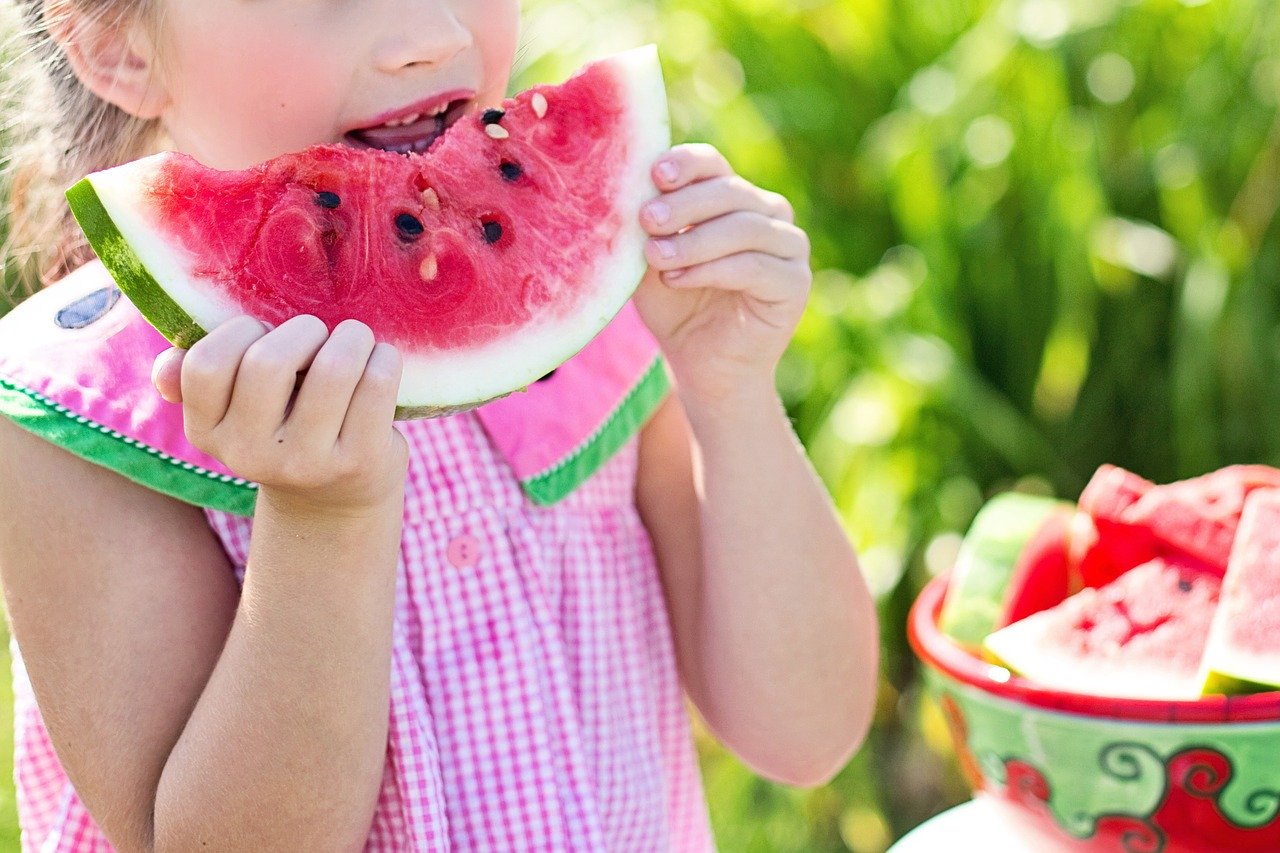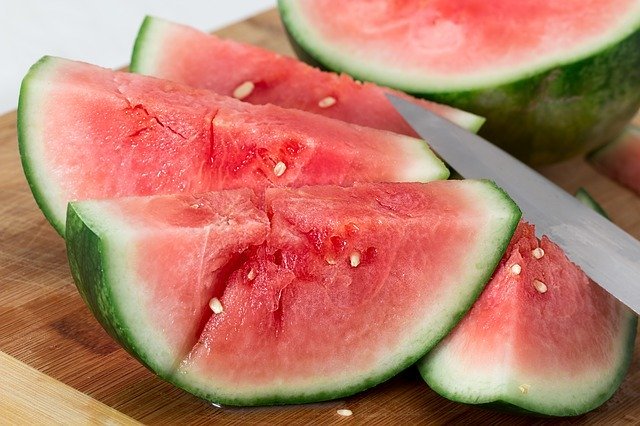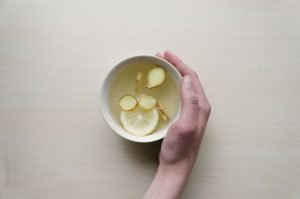Health benefits of watermelon

Watermelon is an oval or spherical fruit of considerable dimensions. Its shell varies in color, from pale green to dark green, sometimes having stripes of two shades of green. The pulp is normally deep red, pink or yellow in color and contains multiple seeds inside, although some varieties do not have these seeds.
That this fruit is water and little else is a legend to be banished.
It creaks in the mouth and it is filled with a sweet liquid with an unmistakable aroma. It is a food to taste, but above all to be satiated. It provides, yes, a good dose of water, but accompanied by nutrients and surprising beneficial substances that are practically only found in watermelon.
There are almost 1,200 varieties of watermelon ( Citrullus lanatus ) in the world, a cucurbit plant, such as melon, squash, zucchini or cucumber. Its origin is in Africa, probably in present-day Namibia, where the largest variety of species of this creeping plant still grows in the wild.
There is evidence that they were cultivated four thousand years ago in the Nile Valley. About a thousand years ago the first ones came to Asia, and 700 years ago to Europe.
Today the world’s largest producer is by far China, which harvests almost 70 of the 140 million tons grown in the world. The remaining half is shared by Iran, Turkey, Egypt, Brazil and the United States, among other countries.
He arrived in the Iberian peninsula with the Arabs, who called it sandiyyah , a modification of the classical Arabic Sindyyyah , which refers to a fertile region of Pakistan: Sind. Today it is grown mainly in Andalusia and in the Levante area, where it blooms between June and July.

Watermelon Properties
It is a fruit with a very high water content (250 g of watermelon equals 220-230 g of water), which makes it an excellent fruit to quench thirst in the warmer months of the year.
It provides a low dose of energy ( 32 calories / 100 g ), so it can be used in generous doses in any type of low calorie diet.
It provides a discrete amount of vitamin C (10 mg / 100 g), but to cover 20% of the daily needs of this vitamin it is enough to consume only 45 calories, thanks to the abundant water that this fruit contains (92% of its weight). ).
It is also a source of beta carotene or provitamin A. Yellow varieties contain a higher concentration, but a 200 g serving of red watermelon (one slice) provides 605 mcg, accounting for 23% of daily vitamin A needs.
The effect of beta-carotene in this regard is multiplied when combined with lycopene . In 100 g of watermelon there are 4,532 mcg of lycopene. The anti-inflammatory effect of triterpene cucurbitacin E must also be added.
It also contains vitamins E and B group .
It should be noted its modest but interesting calcium content , and the same can be said of iron.
The contribution of magnesium and potassium explains the virtues of this fruit to replace losses of mineral salts.
It contains little fiber and its fats are tiny .
Benefits of watermelon
Watermelon has purifying properties and causes a feeling of satiety that can be useful in weight loss diets.
CARDIOVASCULAR PREVENTION
The combination of vitamin C, beta carotene and lycopene makes watermelon a food that prevents cardiovascular disease, cancer and many chronic and degenerative diseases.
LOW BLOOD PRESSURE
The diuretic effect of water and citrulline in watermelon is enhanced by its potassium content (112 mg in 100 g), a mineral that helps control blood pressure, regulates heart rate and probably contributes to preventing heart attacks.
TO LOSE WEIGHT
It is highly recommended, in addition to treating obesity, for kidney and urinary tract problems.
HELP FOR MAN
When you eat watermelon, citrulline, an amino acid present in this fruit, is converted to the amino acid arginine, which improves the production of nitric oxide, which in turn relaxes blood vessels, increases blood flow, and has a positive effect on the erectile function in men .
Of course, it is necessary to ingest a good amount a day (between 400 g and 1 kg) for the blood level of arginine to increase from 12 to 22%. Furthermore, some studies associate watermelon citrulline and arginine with advantages in type 2 diabetes and obesity.
On the other hand, chewing seeds is good for the health of the prostate due to the presence of trace elements such as copper, manganese and zinc. Besides, it has these virtues:
Recommended: 5 foods that help your immune system
Watermelon in the kitchen
If you are right with a watermelon at its point it will be difficult to stop eating it sliced, but in the kitchen it also displays all its qualities and allows you to prepare salads, gazpachos and entrees, healthy skewers, sorbets, fruit salads and even jams and candied fruit. You just have to cut it in different ways, dress it with grace, combine it with soft ingredients or cook it very lightly so that it does not lose juiciness.
PURCHASE AND CONSERVATION
The best time of purchase for this fruit is summer (specifically from June to August). When choosing it, a firm piece should be chosen, heavy and not very shiny in appearance.
You will be able to know when it has reached its optimum point of maturation by tapping its surface with your fingers. If it emits a hollow sound, it indicates that the fruit is full of water and ready to be consumed. Those with breaks or soft parts should not be purchased.
If the fruit is very green, it can be left for a few days at room temperature until it ripens. Finally, it should be borne in mind that watermelon is sensitive to cold, although once collected it must be kept in the fridge so that its pulp does not become dry and stringy.
SEEDLESS WATERMELONS
Seedless watermelons are the result of a natural hybridization between two varieties. The fruit is a triploid watermelon with seeds that when planted produce sterile fruits. However, watermelon seeds can be eaten, like pumpkin seeds.







